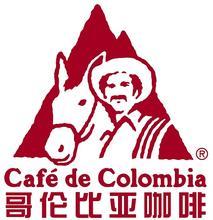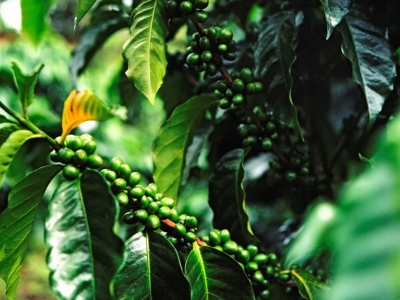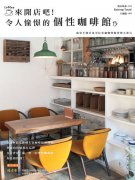History of Origin and Development of Juan Coffee Brand in Colombia
A moustache, wearing a wide-brimmed straw hat, a donkey dragging a sack of coffee beans, behind which was a tall Andean peak. Juan Valdez is a traditional Colombian coffee farmer. For half a century, this simple and honest image has been carefully built for the world to be familiar with.

After entering the 21st century, Colombia has actively attracted foreign investment and pursued economic transformation. Instead of being abandoned, Juan has become a chain brand, attracting urban petty bourgeoisie to enjoy natural and delicious coffee and challenging Starbucks, the world's largest coffee chain.
Founded in 1927, the Colombian Coffee producers Association is a semi-official non-governmental organization that buys coffee to help stabilize market prices, ensure quality, and devote itself to research and development. The Juan image was created by an advertising agency in New York in 1959, and each bag of Colombian coffee is emblazoned with the logo of Juan and donkey.
Before and after, there are three authentic cannon as image spokesmen, doing Reality Show on TV, which has long been attractive and become a world-class brand. The third-generation Juan also uses various social networks to make friends with coffee lovers, maintaining a wonderful virtual and physical relationship, so that customers can recognize old friends as soon as they see the sign. Colombia is the third largest coffee producer in the world, after Brazil and Vietnam, and the producers' Association is composed of more than 550000 small and medium-sized farmers in the country, growing Arabian varieties of coffee-fragrant and low-caffeinated, making it the first choice for high-taste coffee lovers.
Coffee is a commodity traded in the international futures market second only to crude oil. For developing countries that produce coffee, it is a major source of foreign exchange and tens of thousands of domestic producers, including the livelihoods of farmers, transporters, manufacturers and traders.
During the Cold War, the International Coffee Organization used the quota system to stabilize prices in order to ensure that Latin American and African countries had certain foreign exchange earnings, maintain economic development and prevent the spread of communism. Among them, the United States played a key role in quota enforcement, but in 1989, the United States withdrew from the organization, the quota system could not be implemented, and the price of coffee plummeted. By 2001, it had fallen to 1/3 of the level of the 1960s. In this process, speculators are very popular, and the pricing power is basically transferred to the hands of middlemen such as large multinational corporations and futures trading predators, making it increasingly difficult for farmers to survive.
The analysis department of the Colombian Coffee producers Association calculates that consumers drink a cup of coffee in stores such as Starbucks, and most of the profits go to middlemen, and producers get a very small share. So in 2002, a commercial listed company was set up to open coffee bars, starting in Bogota, the capital, to sell coffee beans and coffee drinks directly, posing a challenge to multinational companies.
Juan Coffee Bar is on a par with Starbucks in terms of price, with some products priced slightly lower. Coffee bar decoration is very modern, deliberately avoid folk style, can cater to young white-collar workers to drink a cappuccino and other tastes.
Because Colombian coffee is grown in high mountains with low yield, high labor cost and higher price than ordinary coffee, general coffee merchants often mix it with other varieties for roasting. However, Juan brand is pure Colombian coffee, for coffee experts, this authentic combination of color, flavor, can be said to be a penny of goods. But the pace of "going out" of Juan coffee bars is slow, accounting for about 1/5 of the total number of coffee bars abroad, mainly in several big cities in the United States and Europe and neighboring countries in South America.
The price of coffee has been rising in recent years, and the profits of running coffee bars have been squeezed. Juan is under less pressure in terms of capital operation and can survive.
In addition, the Coffee producers Association encourages customers to buy coffee beans, grind and cook them at home, which is much more affordable than spending outside. This business model of the front store and the back market has achieved the effect of promoting the brand, so the profit of the coffee bar itself is not so important.
Apart from the disintegration of the quota system, the decline in international coffee prices in the 1990s was caused by the influx of Robusta coffee grown in large quantities in Asian countries such as Vietnam and Indonesia, which greatly increased global coffee production. After prices plummeted, some farmers were forced to grow cocaine and sell them to drug cartels to extract drugs, which competed for territory and government raids sprinkled drugs to eliminate cocaine plants, making the mountains extremely dangerous.
In recent years, the fight against drug trafficking has achieved remarkable results, coupled with the reduction of world coffee production, coffee prices have entered a new cycle of price increases. However, because of the appreciation of the Colombian currency, commodities are priced in dollars and the benefits are reduced when they are exchanged for Colombian pesos.
Sylvia is a typical mountain town in Vano province in western Colombia. every Sunday, farmers come to the producers' association to sell raw coffee beans. The staff of the association first put the sacks on the scale, write down the gross weight, and then take samples from each bag, grind off the shell, check the quality, and then determine the price.
Recently, the price of a bag of coffee (12.5kg) is about 90,000 pesos, which is much higher than the 70,000 pesos five or six years ago, but the producing areas are affected by global warming. Coffee production has been reduced due to heavy rain and high-temperate diseases and insect pests. Although the price has gone up, the improvement in the overall income of farmers is limited.
Karsis, who is about 50 years old, is a second-generation farmer with brown skin, short sturdy figure and strong hands, living in a concrete bungalow on the hillside. He owns a 1.7-hectare farm, with 80% of the arable land used for growing organic coffee and the rest for raising cows and planting fruit trees.
A few years ago, he switched to organic coffee, mainly using earthworms, African bees, and spicy crops such as onions, which were planted among coffee trees instead of fertilizers and pesticides. He collects mature coffee beans every two weeks to prevent mildew and insects.
Organic coffee yields about 300 bags per hectare, 1/4 less than regular coffee. Karsis said it was hard to tell how much of the drop was due to the weather and how much was converted to organic. He thought he was very lucky, living in a peaceful mountain area, and many farmers in the south could not stand the threat of left-wing guerrillas and right-wing self-defense forces and abandoned their fields to work in the cities. However, in recent years, there have been some old farmers who have returned to the countryside sporadically from the cities.
Vano province, which has five cooperative branches, set up a roaster in 1990 to produce Ginebras boutique coffee, as well as several export brands, which are exported to Russia and the United States. The most high-end product is organic coffee, which is certified by the International Organization of Rainforest (Rain Forest) or Tropical Ecology (Biotropical) every year and is controlled independently during the roasting process.
"growing coffee is our traditional way of life, and what we are most proud of is that we can grow quality coffee, even if it is worth the hard work." That's what Karsis said.
He is concerned about the trend of coffee futures in the international market. He has a computer at home, but he doesn't check it on the Internet every day. We happened to meet his son when we went out, and he heard that a distant guest came back on a motorcycle to say hello. He works in the town, but will consider following in his father's footsteps as a third-generation farmer.
Their father and son have mixed feelings about the free trade agreement between the United States and Colombia, which President Obama has just signed. Colombian coffee sellers the United States has always enjoyed most-favored-nation status, which is part of the United States assistance program to help farmers and combat drug trafficking. Although the free trade agreement only replaces previous policies, it will be a good thing to revitalize Colombia's trade and improve the economy as a whole. However, the free trade agreement opens up the import of milk and meat, and Costa Rica's dairy industry may be affected by imports. The dairy cattle raised on Karsis's farm produce about 20 liters of milk a day, earning about US $150 a month. He is worried that prices will be affected in the future.
Colombia produced 12 million bags (60 kg each) in 2006 and reduced production to 9 million bags last year. At this time, the world demand for coffee is rising, and the price of coffee hit a 14-year high of $3.089 per pound in May this year.
The main source of growth comes from the middle class in emerging market countries. As a result, China, India and other countries have become coffee producers and operators of the market competition.
This year, the Colombian Coffee producers Association invited 15 Chinese operators from the production, baking and sales industries to attend trade fairs and visit the producing areas in Colombia. According to Mr. Wu Jiahang, the chief representative of the association in Greater China, Colombian coffee currently has a very low market share in China, and ordinary consumers do not have high requirements for quality, and they still stay in the stage where "thick black" is good coffee. The main products on the market are Robusta varieties from Vietnam and Indonesia, which are dark in color, have no aroma and taste average, while the taste of Costa Rican exquisite coffee is limited to a minority.
But he has great confidence in the Chinese market. Japan, for example, imported about 400000 bags of Colombian coffee a year in the 1960s and now consumes 7 million bags a year. China's current import volume is 500000 bags, with such a vast size of China, if compared with the development process of Japan, the future potential is unlimited.

Important Notice :
前街咖啡 FrontStreet Coffee has moved to new addredd:
FrontStreet Coffee Address: 315,Donghua East Road,GuangZhou
Tel:020 38364473
- Prev

Unique, is the core of the cafe-"Let's open a shop!" A longing personality cafe. "
Professional barista communication Please pay attention to the coffee workshop (Wechat official account cafe_style) is unique, is the core of the cafe. If you go to the street to conduct a questionnaire survey on passers-by now, the question is: what kind of store do you dream of opening, regardless of other factors? I think cafes will be a very large proportion of the answer. The cafe is really a combination of romance and dreams, leisurely atmosphere and elegant cooking.
- Next

Beijing delicious in the quiet cafes of the busy city Beijing relax and enjoy a good place worth visiting
Beijing specialty cuisine, the five warmest restaurants in Beijing. When you are tired, tired, want to be alone, hugged by the warm yellow light. You might as well go into these stores and have a look. Here is not impatient, not noisy, only the warm room, hot food and Enron smile. Coffee-controlled evangelical hand makes coffee fresh beans know the taste of husband and wife cafes in the five camps, coffee is always floating in a small shop.
Related
- What documents do you need to go through to open a coffee shop? coffee shop coffee shop certificate processing process
- How to purchase Coffee beans in small Cafe how to choose a suitable supplier for domestic Coffee supply Company
- How to drink Starbucks Fragrance White Coffee? how to make Australian White Coffee? what Italian coffee beans are recommended?
- The Story of Flora Coffee: the name of Flora Coffee Bean and the implication of the Flowers on Florna Coffee
- How much does a cup of coffee cost? How much is the profit of a cup of coffee? What is the profit of the coffee shop in a year?
- Yunnan small Coffee, known as "fragrant Coffee", introduces the characteristics of Alpine Arabica Coffee producing areas in Yunnan, China
- 2023 latest Starbucks full menu price list how much is a cup of Starbucks coffee what is better to drink the most popular hot and cold drinks recommended
- Starbucks different kinds of Coffee Price list Starbucks menu 2023 Top Ten Best drinks in Starbucks
- Starbucks Spring praise Comprehensive matching Coffee Bean theme Story Packaging implication and taste description
- The cost of a cup of coffee latte American coffee cost price and selling price

